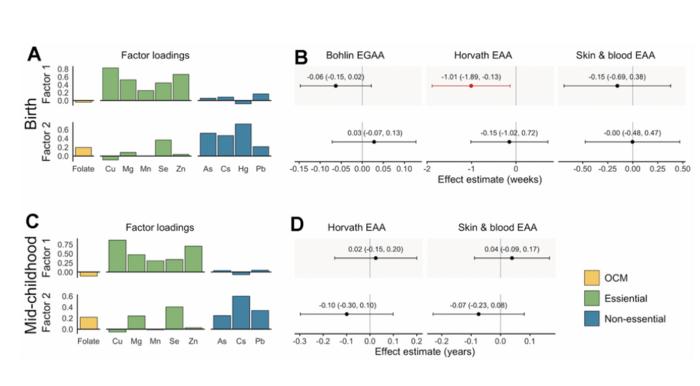Portion of Wages Required for Homeownership Grows at Fastest Pace in More Than 15 Years;
Historic Affordability Down in Almost 80 Percent of Markets as Median Home Price Hits $320,000
IRVINE, Calif., April 7, 2022 /PRNewswire/ -- ATTOM, a leading curator of real estate data nationwide for land and property data, today released its first-quarter 2022 U.S. Home Affordability Report, showing that median-priced single-family homes are less affordable in the first quarter compared to historical averages in 79 percent of counties across the nation with enough data to analyze. That was up from just 38 percent of counties that were historically less affordable in the first quarter of 2021, to the highest point since mid-2008, as home prices continued rising faster than wages in much of the country.
The report determined affordability for average wage earners by calculating the amount of income needed to meet major monthly home ownership expenses — including mortgage, property taxes and insurance — on a median-priced single-family home, assuming a 20 percent down payment and a 28 percent maximum "front-end" debt-to-income ratio. That required income was then compared to annualized average weekly wage data from the Bureau of Labor Statistics (see full methodology below).
"It's certainly no surprise that affordability is more challenging today for prospective homebuyers than it was a year ago," said Rick Sharga, executive vice president of market intelligence for ATTOM. "Historically low mortgage rates and higher wages helped offset rising home prices over the past few years, but as home prices continue to soar and interest rates approach five percent on a 30-year fixed rate loan, more consumers are going to struggle to find a property they can comfortably afford."
Compared to historical levels, median home prices in 461 of the 586 counties analyzed in the first quarter of 2022 were less affordable than in the past. The latest number was up from 449 of the same group of counties in the fourth quarter of 2021 and 224 in the first quarter of 2021. That increase continued as the median national home price spiked 16 percent, year over year, to a record high of $320,000 while average wages across the country rose just 7 percent.
Major ownership costs on median-priced homes around the U.S. did still remain within the financial means of average U.S. workers in the first quarter of 2022, consuming 26.3 percent of the $66,560 average national wage. That was within the 28 percent ceiling considered affordable by common lending standards.
But the 26.3 percent of average wages needed to buy a median-price home stood at the highest point since the third quarter of 2008. It was up from 24.9 percent in the fourth quarter of 2021 and 21.8 percent in the first quarter of last year – the largest annual increase since at least 2005.
The worsening affordability scenario for potential home buyers came as the U.S. housing market kept booming into its 11th year, both because of and in spite of the Coronavirus pandemic that remained a threat to the U.S. economy.
Throughout the pandemic, a glut of buyers has flooded the market, chasing an historically limited supply of homes for sale. This high demand was due in to mortgage rates hovering around 3 percent, and in part because of the flight of urban renters leaving congested virus-prone areas for the perceived safety of a house and yard and the space for growing work-at-home lifestyles. As demand has spiked, prices have jumped beyond wage increases, damaging affordability.
View Q1 2022 U.S. Home Affordability Heat Map
Despite the continued decline in historic affordability, major home-ownership expenses on typical homes still were affordable to average local wage earners during the first quarter of 2022 in about half of the 586 counties in the report, based on the 28-percent guideline. The largest were Cook County (Chicago), IL; Harris County (Houston), TX; Dallas County, TX; Bexar County (San Antonio), TX, and Wayne County (Detroit), MI.
The most populous of the 303 counties where major expenses on median-priced homes were unaffordable for average local workers in the first quarter of 2022 were Los Angeles County, CA; Maricopa County (Phoenix), AZ; San Diego County, CA; Orange County, CA (outside Los Angeles) and Kings County (Brooklyn), NY.
Home prices again up at least 10 percent annually in two-thirds of country
Median single-family home prices in the first quarter of 2022 were up by at least 10 percent over the first quarter of 2021 in 371, or 63 percent, of the 586 counties included in the report. Data was analyzed for counties with a population of at least 100,000 and at least 50 single-family home and condo sales in the first quarter of 2022.
Among the 49 counties with a population of at least 1 million, the biggest year-over-year gains in median prices during the first quarter of 2022 were in St. Louis County, MO (up 40 percent); Wake County (Raleigh), NC (up 29 percent); Maricopa County (Phoenix), AZ (up 28 percent); Collin County (Plano), TX (up 27 percent) and Clark County (Las Vegas), NV (up 26 percent).
Counties with a population of at least 1 million where median prices went up the least, year-over-year, during the first quarter of 2022 were Westchester County, NY (outside New York City) (up less than 1 percent); Montgomery County, MD (outside Washington, DC) (up 1 percent); Cook County (Chicago), IL (up 2 percent); Kings County (Brooklyn), NY (up 4 percent) and Fairfax County, VA (outside Washington, DC (up 5 percent.)
Price gains outpace wage growth in four of every five markets
Home-price appreciation was greater than weekly wage growth in the first quarter of 2022 in 473 of the 586 counties analyzed in the report (81 percent), with the largest including Los Angeles County, CA; Harris County (Houston), TX; Maricopa County (Phoenix), AZ; San Diego County, CA, and Orange County, CA (outside Los Angeles).
Average annualized wage growth surpassed home-price appreciation in the first quarter of 2022 in 113 of the counties in the report (19 percent), including Cook County, (Chicago), IL; Kings County (Brooklyn), NY; King County (Seattle), WA; Santa Clara County (San Jose), CA, and New York County (Manhattan), NY.
Ownership costs still require less than 28 percent of average local wages in almost half of the nation
Major ownership costs on median-priced, single-family homes in the first quarter of 2022 consumed less than 28 percent of average local wages in 283 of the 586 counties analyzed (48 percent), assuming a 20 percent down payment. That was down slightly from 52 percent in the fourth quarter of 2021 for the same group of counties but well down from 66 percent in the first quarter of last year.
"The good news is that in almost half the counties we reviewed, home ownership costs remained below 28% for households with average income," Sharga said. "But the 'x-factor' is what impact 8% inflation rates will have on these households, and their ability to meet their financial obligations. Rising food and energy prices could be a hidden factor that makes affordability even more of a challenge for homebuyers and makes it more difficult to make ends meet for current homeowners."
Among those counties, 98 percent saw an increase in the portion of average local wages consumed by major ownership expenses from the first quarter of last year to the same period this year.
Counties where the smallest portion of average local wages was required to afford the median-priced home during the first quarter of this year were Schuylkill County, PA (outside Allentown) (7 percent of annualized weekly wages needed to buy a home); Macon County (Decatur), IL (9.7 percent); Peoria County, IL (10.2 percent); Bibb County (Macon), GA (10.2 percent) and Rock Island County (Moline) IL (11 percent).
Counties with a population of at least 1 million where major ownership expenses typically consumed less than 28 percent of average local wages in the first quarter of 2022 included Wayne County (Detroit), MI (11.9 percent); Allegheny County (Pittsburgh), PA (14.2 percent); Cuyahoga County (Cleveland), OH (15.1 percent); Philadelphia County, PA (16 percent) and Cook County (Chicago), IL (20.6 percent).
A total of 303 counties in the report (52 percent) required more than 28 percent of annualized local weekly wages to afford a typical home in the first quarter of 2022. Counties that required the greatest percentage of wages were Santa Cruz County, CA (92.7 percent of annualized weekly wages needed to buy a home); Kings County (Brooklyn), NY (91.5 percent); Marin County, CA (outside San Francisco) (79.7 percent); Maui County, HI (74.8 percent) and San Luis Obispo County, CA (73.7 percent).
Aside from Kings County, NY, the counties with a population of at least 1 million where home ownership consumed the highest percentage of average annualized local wages in the first quarter of this year included Orange County, CA (outside Los Angeles) (67.8 percent); Queens County, NY (65 percent); Alameda County (Oakland), CA (59 percent) and New York County (Manhattan, NY (58.9 percent).
Just one in four counties require annual wages of more than $75,000 to afford typical home
Despite the downward trend in affordability, annual wages of more than $75,000 still were needed to afford major costs on the median-priced home purchased during the first quarter of 2022 in just 138, or 24 percent, of the 586 markets in the report.
The top 25 highest annual wages required to afford typical homes again were all on the east or west coasts, led by New York County (Manhattan), NY ($329,747); San Mateo County (outside San Francisco), CA ($286,976); Santa Clara County (San Jose), CA ($266,934); San Francisco County, CA ($264,038) and Marin County (outside San Francisco), CA ($250,106).
The lowest annual wages required to afford a median-priced home in the first quarter of 2022 were in Schuylkill County, PA (outside Allentown) ($12,011); Cambria County, PA (outside Pittsburgh) ($17,129); Bibb County (Macon), GA ($18,027); Fayette County, PA (south of Pittsburgh) ($18,583) and Blair County (Altoona), PA ($19,221).
Homeownership less affordable than historic averages in almost 80 percent of counties
Among the 586 counties analyzed in the report, 461 (79 percent) were less affordable in the first quarter of 2022 than their historic affordability averages. That was up slightly from 77 percent in the fourth quarter of 2021, but double the 39 percent level in the first quarter of last year.
Counties with a population of at least 1 million that were less affordable than their historic averages (indexes of less than 100 are considered less affordable compared to historic averages) included Maricopa County (Phoenix), AZ (index of 68); Clark County (Las Vegas), NV (71); Tarrant County (Fort Worth), TX (72); Hillsborough County (Tampa), FL (72) and Collin County (Plano), TX (73).
Counties with the worst affordability indexes in the first quarter of 2022 were Clayton County, GA (outside Atlanta) (index of 45); Canyon County, ID (outside Boise) (55); Rankin County (Jackson), MS (55); Pinal County, AZ (outside Phoenix) (58) and Newton County, GA (east of Atlanta) (59).
Among counties with a population of at least 1 million, those where the affordability indexes worsened most from the first quarter of 2021 to the first quarter of 2022 were St. Louis County, MO (index down 32 percent); Wake County (Raleigh), NC (down 26 percent); Maricopa County (Phoenix), AZ (down 25 percent); Clark County (Las Vegas), NV (down 24 percent) and Collin County (Plano), TX (down 24 percent).
Only one in five markets were more affordable than historic averages
Among the 586 counties in the report, only 125 (21 percent) were more affordable than their historic affordability averages in the first quarter of 2022. That was down slightly from 23 percent of the same group in the prior quarter but was just a third of the 62 percent level in the first quarter of last year.
Counties with a population of at least 1 million that were more affordable than their historic averages (indexes of more than 100 are considered more affordable compared to historic averages) included Westchester County, NY (outside New York City) (index of 125); Montgomery County, MD (outside Washington, D.C.) (119); Cook County (Chicago), IL (112); New York County (Manhattan), NY (110) and Fairfax County, VA (outside Washington, D.C.) (106).
Counties with the best affordability indexes in the first quarter of 2022 included Macon County (Decatur), IL (index of 180); Kings County, CA (south of Fresno) (156); Schuylkill County, PA (outside Allentown) (152); Peoria County, IL (148) and San Francisco County, CA (142).
Counties with a population of least 1 million where the affordability index declined the least from the first quarter of last year to the same period this year were Montgomery County, MD (outside Washington, DC) (index down 3 percent); Cook County (Chicago), IL (down 4 percent); Westchester County, NY (outside New York City) (down 6 percent); New York County (Manhattan), NY (down 8 percent) and Hennepin County (Minneapolis), MN (down 9 percent). No counties with populations of at least 1 million saw their indexes improve over that time period.
Report Methodology
The ATTOM Data Solutions U.S. Home Affordability Index analyzed median home prices derived from publicly recorded sales deed data collected by ATTOM and average wage data from the U.S. Bureau of Labor Statistics in 586 U.S. counties with a combined population of 261.2 million during the first quarter of 2022. The affordability index is based on the percentage of average wages needed to pay for major expenses on a median-priced home with a 30-year fixed-rate mortgage and a 20 percent down payment. Those expenses include property taxes, home insurance, mortgage payments and mortgage insurance. Average 30-year fixed interest rates from the Freddie Mac Primary Mortgage Market Survey were used to calculate monthly house payments.
The report determined affordability for average wage earners by calculating the amount of income needed for major home ownership expenses on a median-priced home, assuming a loan of 80 percent of the purchase price and a 28 percent maximum "front-end" debt-to-income ratio. For example, the nationwide median home price of $320,000 in the first quarter of 2022 required an annual wage of $62,543, based on a $64,000 down payment, a $256,000 loan and monthly expenses not exceeding the 28 percent barrier — meaning households would not be spending more than 28 percent of their income on mortgage payments, property taxes and insurance. That required income was less than the $66,560 average wage nationwide based on the most recent average weekly wage data available from the Bureau of Labor Statistics, making a median-priced home nationwide affordable for average workers.
About ATTOM
ATTOM provides premium property data to power products that improve transparency, innovation, efficiency and disruption in a data-driven economy. ATTOM multi-sources property tax, deed, mortgage, foreclosure, environmental risk, natural hazard, and neighborhood data for more than 155 million U.S. residential and commercial properties covering 99 percent of the nation's population. A rigorous data management process involving more than 20 steps validates, standardizes, and enhances the real estate data collected by ATTOM, assigning each property record with a persistent, unique ID — the ATTOM ID. The 20TB ATTOM Data Warehouse fuels innovation in many industries including mortgage, real estate, insurance, marketing, government and more through flexible data delivery solutions that include bulk file licenses, property data APIs, real estate market trends, property reports and more. Also, introducing our newest innovative solution, that offers immediate access and streamlines data management – ATTOM Cloud.
Media Contact:
Christine Stricker
949.748.8428
christine.stricker@attomdata.com
Data and Report Licensing:
datareports@attomdata.com
949.502.8313
datareports@attomdata.com
View original content to download multimedia:https://www.prnewswire.com/news-releases/home-affordability-gets-tougher-across-the-us-as-prices-and-mortgage-rates-surge-301519644.html
SOURCE ATTOM
















































